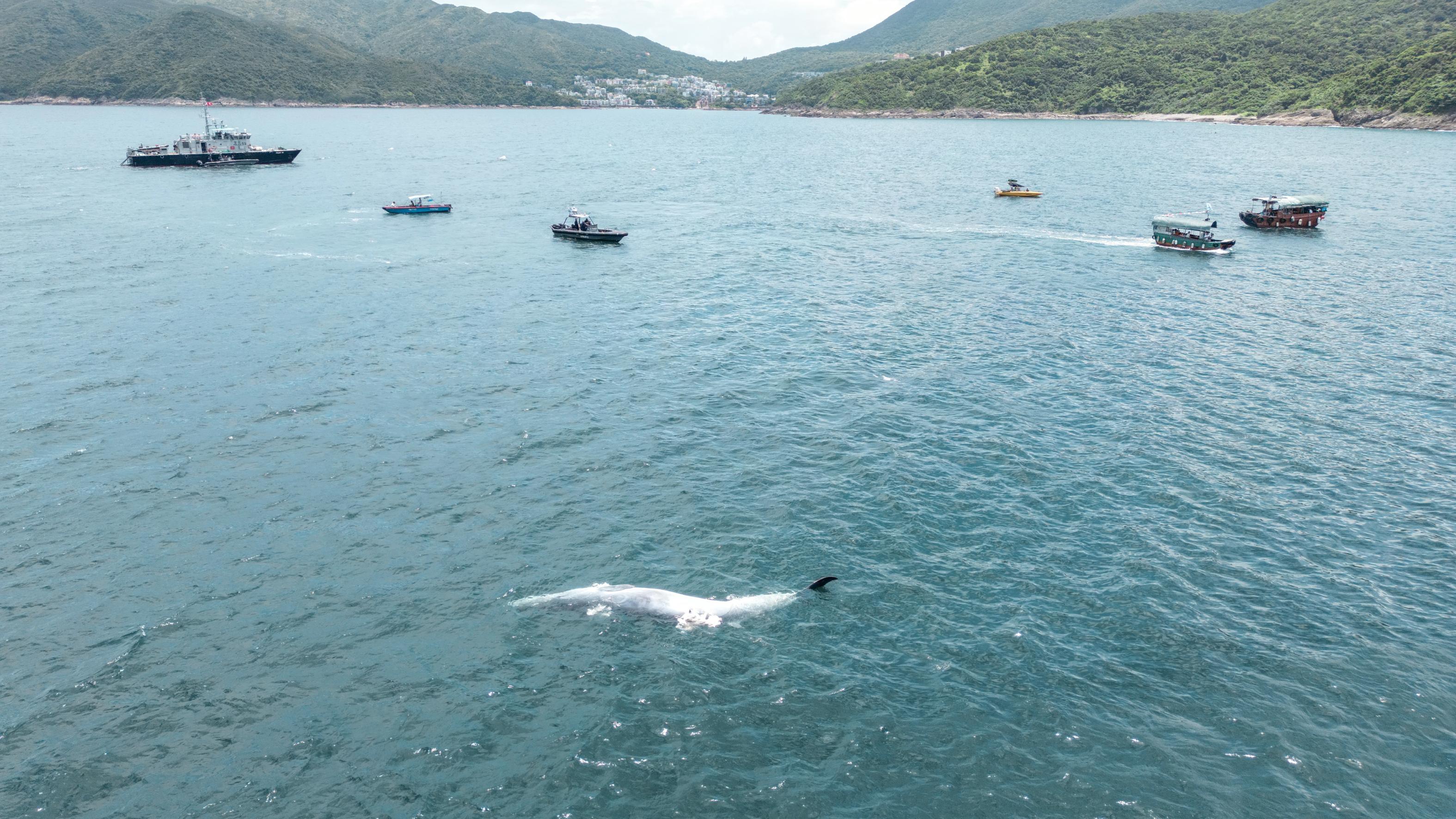 A Bryde's whale carcass is seen off Shelter Island in Sai Kung on July 31, 2023. (PHOTO PROVIDED TO CHINA DAILY)
A Bryde's whale carcass is seen off Shelter Island in Sai Kung on July 31, 2023. (PHOTO PROVIDED TO CHINA DAILY)
HONG KONG - The Agriculture, Fisheries and Conservation Department will bury parts of the whale carcass, which was found last week off Shelter Island in Sai Kung, on Tuesday on a spot near the High Island Reservoir West Dam, with aim of further research in the future.
The seven-meter-long Bryde's whale, a first-class protected animal in China, was first spotted in waters off Sai Kung in mid-July, prompting residents and travelers to rent boats to venture out to watch and chase after it.
Later it was found to have two wounds on its back, which was believed to have been struck by a ship propeller.
ALSO READ: HK expert: Whale may have died from ship propeller strike
The Agriculture, Fisheries and Conservation Department urged members of the public not to approach and watch the burial to avoid any danger since machines and chemicals would be used
The department originally planned to bury the carcass on Monday, but after an initial assessment, decided to proceed with the burial on Tuesday morning instead, according to local media reports.
The department said in a statement on Sunday that it had worked with experts of Ocean Park Hong Kong, the Ocean Park Conservation Foundation Hong Kong and the City University of Hong Kong over the past few days and completed a necropsy on the carcass, but analyses on samples of whale tissues were still underway.
Proper procedures would be taken during the burial to ensure hygiene and environmental requirements are followed, the department said, adding that the whale carcass would be sent to the Ocean Park Hong Kong for research purposes after natural decay.
READ MORE: Whale carcass found off Shelter Island in Sai Kung
The department urged members of the public not to approach and watch the burial to avoid any danger since machines and chemicals would be used.
The department added that it was hoping that the whale carcass could be made later into a specimen for education and conservation purposes.


